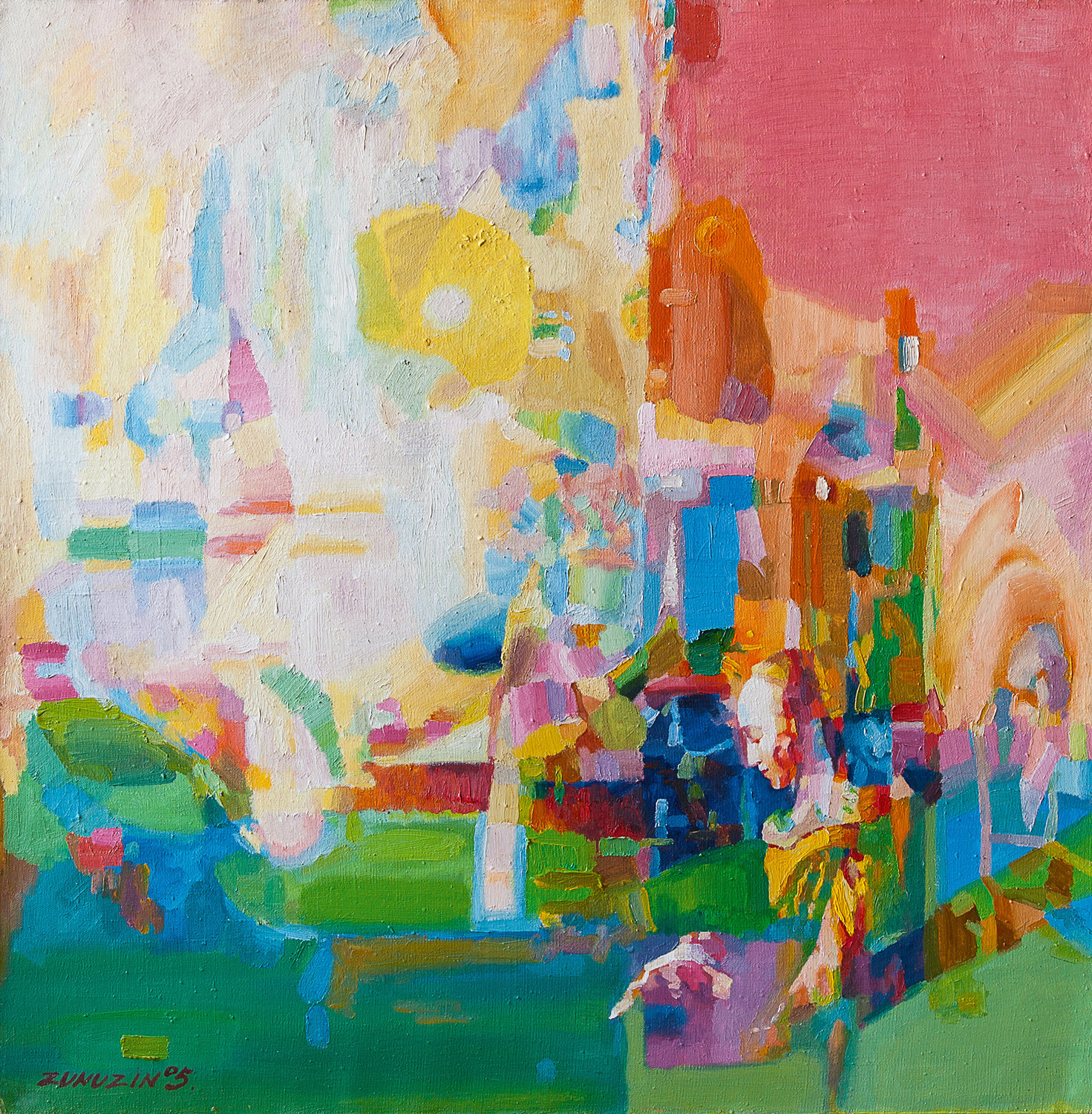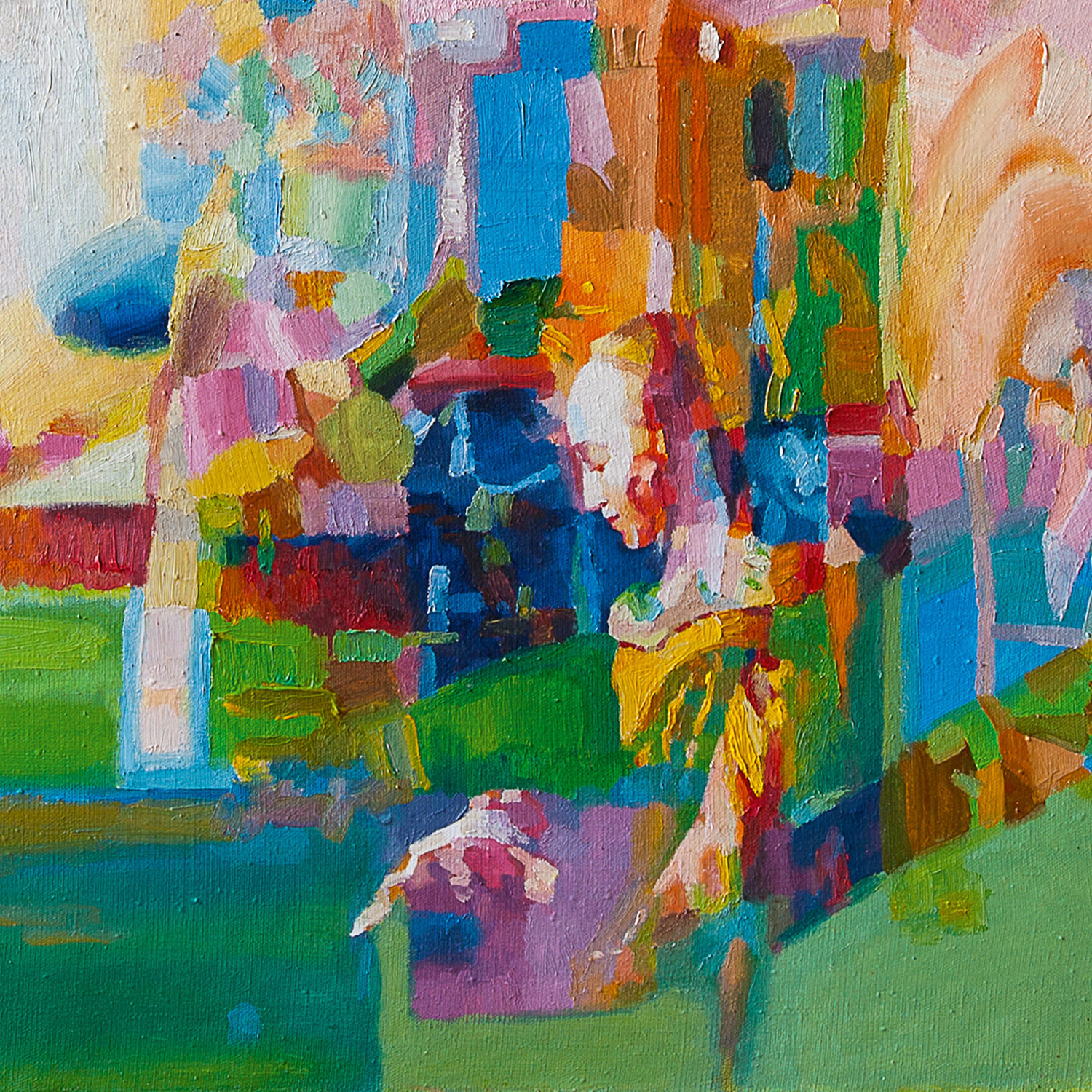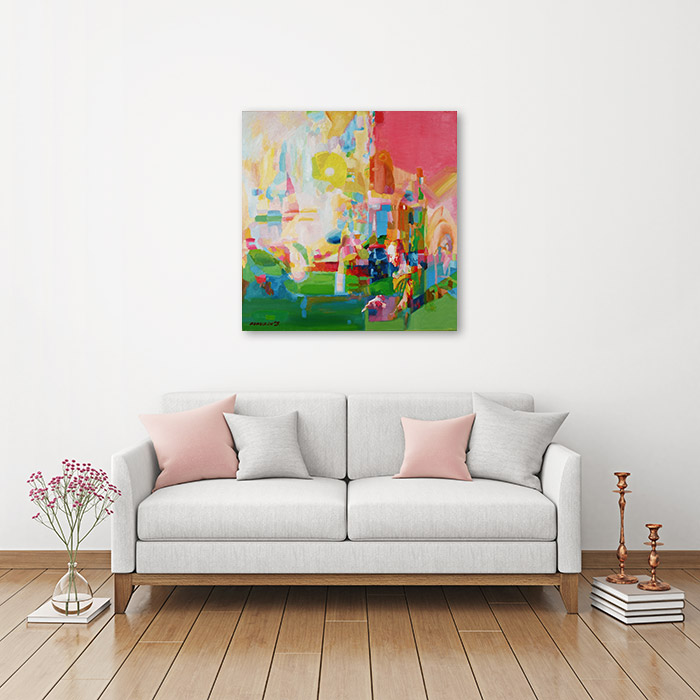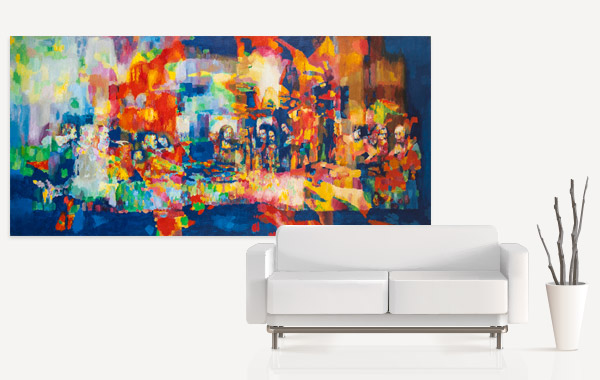Girl reading a letter at an open window (Jan Vermeer Van Delft Improvisation)
Print information
- Artwork printed by EPSON Stylus Pro 7880 (Epson Ultra Chrome K3 Vivid Magenta) on canvas.
- Limited edition prints of 100. Each artwork will be individually printed, signed, dated and numbered by the artist Vladimir Zunuzin.
Payment and delivery
- Payments by Paypal or 2Checkout.
- Free worldwide shipping with tracking. Will usually ship within 3-5 business days.
- Year created: 2005
- Medium: oil on canvas
- Dimensions (cm): 102x100
Girl Reading a Letter at an Open Window (Vermeer Improvisation) reimagines the quiet intimacy of Vermeer’s scene through a vibrant, abstract lens. The composition shimmers with fragmented shapes and luminous colors, giving the sense of light scattering across the canvas. A figure emerges delicately on the right, her bowed head and gentle posture evoking stillness and contemplation.
Instead of Vermeer’s soft realism, the work explodes into bold planes of pink, green, blue, and yellow. These color fields do not describe objects directly but rather suggest the mood of the moment—the tenderness of reading, the hush of private thought, the radiance of daylight filtering through space. The window becomes not just an opening but a cascade of fractured light.
This improvisation transforms a scene of domestic stillness into something dreamlike and modern. It bridges the everyday and the transcendent, offering a vision of reflection where form dissolves into color, and quiet becomes radiant presence.








